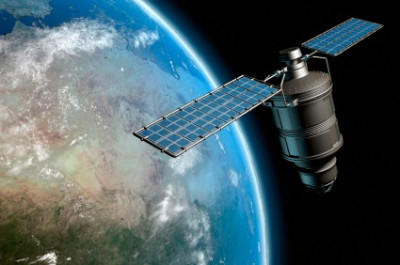By Bruce H. Leeds, Senior Counsel
Originally all satellites, whether military, commercial, or remote-sensing were subject to controls under Cat. XV of the US Munitions List (USML) in the International Traffic in Arms Regulations (ITAR). In the early 1990s most commercial satellites were moved to the Export Administration Regulations (EAR) of the Department of Commerce. Then, after some violations associated with launches in China, Congress passed legislation transferring all satellites back to the ITAR. Those controls have been in place since March 15, 1999.
Now, satellite export controls are changing again. On May 13, 2014 an Interim Final Rule appeared in the Federal Register containing a complete revision to Cat. XV of the USML and changes to other parts of the ITAR. It is an “interim” final rule in that the US Government feels that additional analysis and public comments on a few provisions are warranted. The majority of the changes to USML Cat. XV and corresponding changes to the EAR go into effect on Nov. 10, 2014. The Directorate of Defense Trade Controls (DDTC) will accept further comments on subparagraphs (a)(7) and (e)(11) of Cat. XV , covering remote sensing satellites and certain space based systems, and Section 124.15 of the ITAR, dealing with export of satellites for launch and associated defense services, until June 27.
The main area of contention relating to the current satellite export controls (the ones in effect since Mar. 15, 1999) was the extensive ITAR licensing requirements for commercial satellites and components. Loss of market share and advertisement of “ITAR-free” commercial satellites by foreign producers were blamed in part on these controls. The revisions to Cat. XV should address many of these concerns.
The revised satellite provisions in the USML begin with subcategory XV (a) which contains a detailed description of satellites remaining under ITAR controls. By process of elimination, satellites not described in Cat. XV(a) are no longer subject to ITAR and are transferred to the Commerce Control List (CCL) in the Export EAR. Cat. XV(a) now includes satellites that detect nuclear detonations, track ground and space objects, conduct signals intelligence, form part of a virtual satellite network, have anti-satellite capabilities, possess space-to-ground weapons systems, contain clearly defined remote sensing capabilities, have hyperspectral or spectral bands, or have classified payloads. These satellites are all very specialized.
What about commercial satellites? In explaining the changes, the Federal Register Notice stated that having commercial end-use alone does not remove a satellite from ITAR controls. If a commercial satellite has any of the features described in Cat. XV(a) it will still be subject to the ITAR. This is similar to what existed in the 1990s. At that time commercial satellites having certain features remained subject to the ITAR. Licensing personnel had to determine whether a commercial communications satellite had any of those features before submitting a license application to Department of Commerce. A prudent licensing employee should do the same thing now and ask the technical people whether a commercial satellite proposed for export has any of the features described in Cat. XV(a). A best practice would be to use a questionnaire asking about the existence or non-existence of each controlled feature. The response to the questionnaire would become part of the license file.
How are parts and subassemblies of satellites handled? Subcategory XV(e) lists the components, parts, accessories, attachments, equipment and systems that are ITAR-controlled. That subcategory describes the controlled articles in very specific language. Here are a couple of examples:
“(3) Space-qualified focal plane arrays (FPA) having a peak response in the wavelength range exceeding 900nm and readout integrated circuit (ROIC), whether separate or integrated, specially designed therefor”
“(12) Thrusters (e.g., rocket engines) that provide greater than 150 lbf (i.e.,667.23 N) vacuum thrust (MT for rocket motors or engines having a total impulse capacity equal to or greater than 8.41×10∧5 newton seconds)”
Obviously you are going to need some technical assistance to classify many satellite parts and subassemblies in Cat. XV.
Many of the provisions in Cat. XV(e) use the phrase “specially designed,” meaning that a licensing person will need to apply the “catch and release” rules and use the tool on the DDTC and BIS websites in order to classify a part or subassembly.
Parts, components, etc. not described in Cat. XV(e) are no longer subject to the ITAR and are subject to EAR controls under the CCL.
Cat. XV also includes an “(x)” subcategory for commodities, software and technology subject to the EAR and used with defense articles controlled in Cat. XV. Thus, if a company was proposing to export electronic parts, normally falling under EAR controls, under a contract to a foreign company for production of a remote sensing satellite controlled under the ITAR, the exporter would classify the parts in Cat. XV(x) and submit a license application to DDTC.
Finally, the revised Cat. XV includes a number of notes providing definitions and guidelines for classifying articles in this category. Be sure to read the relevant notes carefully before finalizing the export classification.
Satellites, and associated ground equipment, parts, components, accessories and attachments not described in Cat. XV are classified in the CCL, and are subject to EAR controls. The CCL was modified to create new provisions covering satellites and associated articles no longer controlled under the ITAR. What do those provisions look like? Sounds like we need another article. Stay tuned!

























